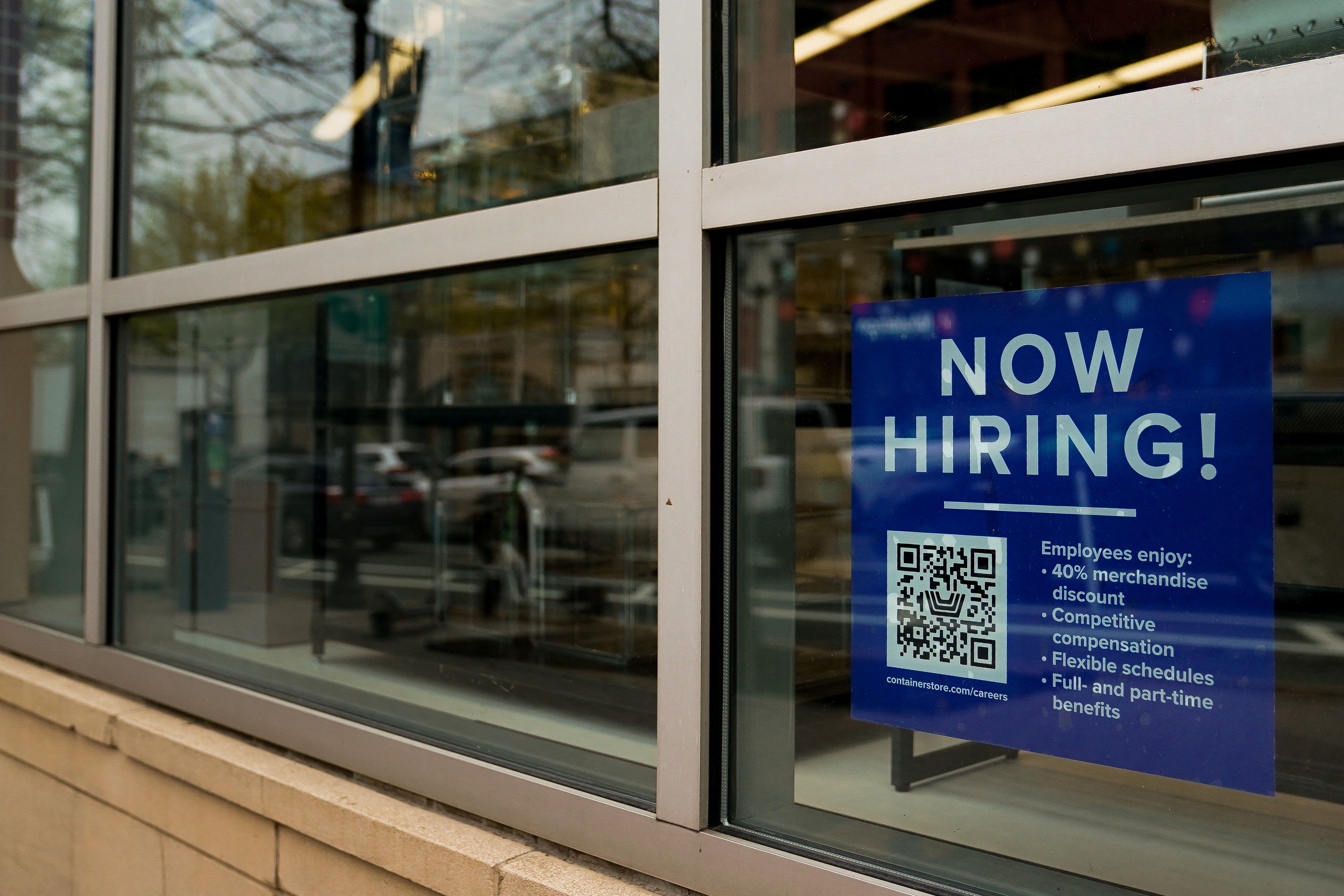WASHINGTON, May 5 (Reuters) – U.S. job growth accelerated in April while wage gains rose solidly, pointing to continued labor market strength that could keep interest rates higher for longer as the Federal Reserve struggles to tame inflation.
Friday’s closely watched employment report from the Labor Department showed the unemployment rate fell to a 53-year low of 3.4%. Although the data for February and March were slightly revised, the labor market is only marginally slowing. It suggested the economy has so far been hit by tight credit conditions, with the central bank’s punitive rate hikes raising the risk of a recession.
“Interest rates need to be raised,” said Sean Snaith, director of the Institute for Economic Forecasting at the University of Central Florida. “This kind of strength in the labor market makes it very difficult for the central bank to reduce inflation.”
Nonfarm payrolls rose by 253,000 jobs last month, but the economy created 149,000 fewer jobs in February and March than previously reported. Job growth averaged 290,000 jobs per month over the previous six months. Economists polled by Reuters had forecast wages rising to 180,000.
The economy needs to create 70,000-100,000 jobs each month to keep up with the growth of the working-age population. The share of private industries adding jobs increased from 57% to 57.4%.
A larger-than-expected increase in wages could signal some spring revival in the economy after activity slowed in February and March.
Data this week showed manufacturing at a three-year low and services sector growth picking up slightly. Motor vehicle sales also accelerated last month.
President Joe Biden seized on the jobs report to urge Congress to raise the federal government’s debt ceiling amid predictions that the money will run out in June, which would do major damage to the economy.
“The last thing this country needs, after what we’ve been through, is a manufactured crisis,” Biden said ahead of a meeting on US investment. “This is a manufacturing crisis driven by MAGA Republicans in Congress.” MAGA is an acronym for former President Donald Trump’s “Make America Great Again” slogan.
The U.S. Federal Reserve raised its benchmark overnight interest rate by another 25 basis points to a range of 5.00%-5.25% on Wednesday, signaling that it may pause its fast monetary policy tightening campaign since the 1980s. The central bank has raised its policy rate by 500 basis points from March 2022.
Professional and business services added 43,000 positions, with the services sector accounting for most of April’s job gains. But temporary help services employment, considered a precursor to future hiring, fell by just 23,000 positions and is down 174,000 from its peak in March 2022.
40,000 increase in health wages. Employment in the leisure and hospitality sector increased by 31,000 jobs, mostly concentrated in restaurants and bars. Hiring has slowed in a sector that has been a key driver of job growth.
Employment in the industry is 402,000 jobs below its pre-pandemic level.
Wages in financial operations rose by 23,000, as did the government jobs category. Government employment is 301,000 positions below pre-pandemic levels. Manufacturing, retail sales and construction wages rebounded after falling in March.

[1/2] An employee recruitment sign with a QR code is seen in the window of a business in Arlington, Virginia, USA on April 7, 2023. REUTERS/Elizabeth Frantz
The report poured cold water on financial market expectations that the central bank would start cutting interest rates this year. Consumer price index data for April, due out next Wednesday, will provide additional clues on the near-term path of monetary policy.
Stocks traded higher on Wall Street. The dollar fell against a basket of currencies. US Treasury yields rose.
Fixed wage gains
Some economists say hoarding of workers by businesses after difficulties finding workers after the COVID-19 pandemic is contributing to strong job growth, which is expected to last at least through the fourth quarter.
Average hourly earnings rose 0.5% last month after advancing 0.3% in March. Wages rose 4.4% on a year-over-year basis in April after rising 4.3% in March, in line with other measures such as the Employment Cost Index and the Atlanta Fed’s wage tracker. Wage growth has been too strong to match the central bank’s 2% inflation target.
While the work week was unchanged at 34.4 hours, total hours worked rose 0.2%. This created a 0.7% gain in wages.
An increase in business output and an increase in hours at the start of the second quarter prefigured a bounce-back in productivity, which peaked after the pandemic in 2021, but has since declined on a year-over-year basis. It’s five straight quarters, the longest such stretch since the government began tracking the series in 1948.
“The prospects for a productivity rebound in the second quarter are good,” said Brian Bethune, an economics professor at Boston College. “That will curb unit labor costs, and all other costs should see the first absolute decline in many years. The prospects for gradual inflation in the second and third quarters are still good.”
The details of the household survey where the unemployment rate was calculated were encouraging. Domestic work increased, while the labor force declined somewhat.
It also lowered the unemployment rate to 3.4%, matching the lowest level since 1969, down from 3.5% in March. The unemployment rate for blacks hit a new record high of 4.7%.
The labor force participation rate, or the proportion of Americans of working age or looking for work, remained unchanged at 62.6%. But the share of 25 to 54-year-olds rose to a 15-year high of 83.3%.
The prime-age employment-to-population ratio, a measure of the economy’s ability to generate employment, rose to 80.8%, the highest level since May 2001.
“The recession hasn’t started yet,” said Steven Blitz, chief U.S. economist at TS Lombard in New York.
Report by Lucia Muticani; Editing by Andrea Ricci
Our Standards: Thomson Reuters Trust Principles.
